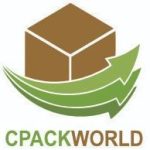CPack World Corrugate Boxes Blog
Corrugated boxes are one of the most widely used packaging materials in the world. They are made of corrugated cardboard, which consists of one or more layers of fluted paper sandwiched between flat sheets of paper. Corrugated boxes are durable, lightweight, recyclable, and customizable for different products and purposes. In this article, we will explore everything you need to know about corrugated boxes and their styles.
What are the benefits of corrugated boxes?
Corrugated boxes offer many advantages over other types of packaging, such as:
- Protection: Corrugated boxes can withstand shocks, vibrations, drops, and impacts during transportation and handling. They also provide cushioning and insulation for the products inside, protecting them from moisture, dust, insects, and temperature changes.
- Versatility: Corrugated boxes can be designed to fit any shape, size, weight, and quantity of products. They can also be printed with logos, graphics, labels, barcodes, and other information to enhance the brand image and visibility of the products.
- Sustainability: Corrugated boxes are made from renewable resources, such as wood pulp and recycled paper. They are also biodegradable and compostable, reducing the environmental impact of packaging waste. According to the Fibre Box Association, corrugated boxes have a recovery rate of 92% in 2018, making them the most recycled packaging material in the US.
- Cost-effectiveness: Corrugated boxes are easy to manufacture, assemble, store, and transport. They also save space by folding flat when not in use. They can help reduce the shipping costs and storage fees for the products.
What are the types of corrugated boxes? :
There are four main types of corrugated cardboard based on the number and arrangement of the fluted layers:
- Single-face: This type consists of one layer of fluted paper glued to one layer of flat paper. It is usually used as a wrapping or padding material for fragile or irregular-shaped items.
- Single-wall: This type consists of one layer of fluted paper sandwiched between two layers of flat paper. It is the most common type of corrugated cardboard and can be used for a variety of products and applications.
- Double-wall: This type consists of two layers of fluted paper separated by a layer of flat paper and glued to two outer layers of flat paper. It is stronger and more rigid than single-wall cardboard and can be used for heavier or more valuable products.
- Triple-wall: This type consists of three layers of fluted paper separated by two layers of flat paper and glued to two outer layers of flat paper. It is the strongest and most durable type of corrugated cardboard and can be used for industrial or heavy-duty products
What are the styles of corrugated boxes?
There are many different styles of corrugated boxes that can be customized to suit the specific needs of the products and customers. The most common styles fall into three categories: slotted boxes, telescope boxes, and folders.
Slotted boxes
Slotted boxes are made from one piece of corrugated cardboard that is scored and slotted for easy folding. The flaps on the top and bottom can be sealed with tape, glue, or staples. The major differences between the various slotted box styles are the varying lengths of the inner and outer flaps. Some examples of slotted box styles are:
Regular Slotted Container (RSC):
This is the most common style of corrugated box. The outer flaps (lengthwise flaps) are one-half the box’s width, so that they meet in the middle when folded into a box. This style is highly efficient to manufacture and results in very little waste.
Half Slotted Container (HSC):
This is similar to the RSC except that one set of flaps is excluded. This style is often used with a separate lid or cover.
Overlap Slotted Container (OSC):
This style has all flaps with the same length, but the outer flaps overlap by at least one inch when folded. This style provides extra strength and stability for long or narrow boxes.
Full Overlap Slotted Container (FOL):
This style has all flaps with the same length (approximately the width of the box), but they almost completely overlap when folded. This style offers enhanced cushioning and stacking potential.
Center Special Slotted Container (CSSC):
This style has inner and outer flaps with different lengths. The inner flaps meet in the center, creating a level base and top for the box. The outer flaps can be sealed in various ways





